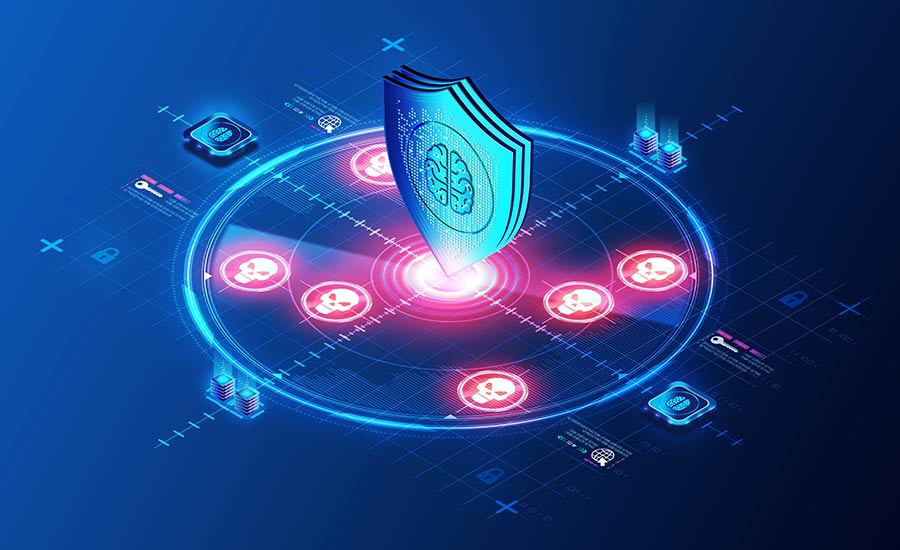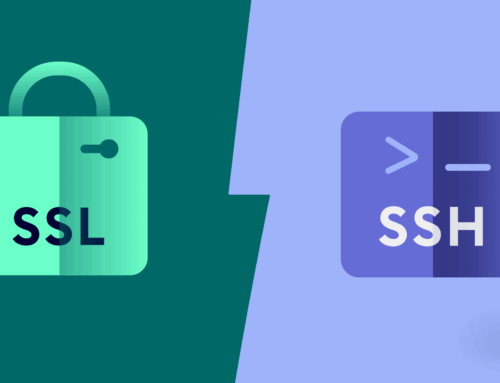
Threat Intelligence Sharing Across Borders.
AI for Cyber Threat Intelligence Sharing Across Borders & Cybersecurity Collaboration.
In today’s interconnected world, cybersecurity has become a paramount concern for organizations striving to protect their critical infrastructure and maintain a robust security posture. As cyber threats continue to evolve, the need for effective threat intelligence and collaboration across borders has never been more urgent. At Teamwin Global Technologica, we understand the vital importance of empowering our clients with cutting-edge solutions that enhance cyber resilience. By integrating artificial intelligence into cyber threat intelligence sharing, we provide a proactive defense against evolving threat actors. Our commitment is to safeguard enterprises by ensuring tomorrow’s success, offering peace of mind through comprehensive cybersecurity strategies and reliable collaboration across industries.
Understanding Cyber Threat Intelligence
Definition and Importance of Threat Intelligence
Threat intelligence is crucial for developing actionable intelligence that can inform security measures. is the cornerstone of an effective cybersecurity strategy. It involves the collection, analysis, and dissemination of information about potential cyber threats that could harm an organization. The importance of threat intelligence lies in its ability to provide security teams with actionable insights, enabling them to anticipate and mitigate cyber risks before they escalate into full-blown incidents. Here are some key aspects of how threat intelligence enhances cybersecurity:
- By sharing intelligence and threat data through secure platforms, organizations can enhance their security measures and improve incident response.
- At Teamwin Global Technologica, we prioritize the sharing of sensitive information within a trusted network, ensuring our clients are equipped to counteract potential cyber attacks and fortify their defenses against emerging threats.
Types of Cyber Threats
In the dynamic cyber threat landscape, organizations face a myriad of challenges that require constant vigilance and swift action. Cyber threats can take various forms, including malware attacks, phishing schemes, ransomware, and advanced persistent threats orchestrated by sophisticated threat actors. Understanding these threats is crucial for building effective defense mechanisms that protect an organization’s national security and critical infrastructure. At Teamwin Global Technologica, we recognize the necessity of comprehensive threat detection and threat hunting processes to stay ahead of potential adversaries. By leveraging threat intelligence feeds and data sharing across industries, we empower our clients to navigate the complex landscape of cyber threats with confidence and resilience, enhancing their overall security posture.
The Role of AI in Cyber Threat Intelligence
Artificial intelligence is revolutionizing the field of cyber threat intelligence, enhancing the ability to detect, analyze, and respond to threats with unprecedented speed and accuracy. AI-driven cybersecurity solutions streamline the process of information sharing, allowing for efficient collaboration among security teams worldwide. By incorporating AI into threat intelligence platforms, organizations can automate threat detection and intelligence sharing, reducing the time it takes to respond to cyber incidents. At Teamwin Global Technologica, we are dedicated to providing innovative AI solutions that strengthen cybersecurity collaboration, safeguard sensitive information, and enhance the global cyber defense posture. Our focus remains on delivering value-driven, customer-centric services that fortify businesses against potential threats and ensure a secure future.
Threat Intelligence Sharing Across Borders
Challenges in International Intelligence Sharing
In the global arena of cybersecurity, threat intelligence sharing across borders presents numerous challenges that organizations must navigate to ensure robust cyber defense. The primary obstacle is the sharing of threat information among countries with different legal and regulatory frameworks. diverse legal and regulatory frameworks that govern information sharing in different countries. These complexities can hinder the seamless exchange of threat data, impeding effective collaboration. Furthermore, concerns about data privacy and the potential exposure of sensitive information can deter organizations from fully participating in international intelligence sharing initiatives. Cultural differences and varying levels of technological advancement across nations also contribute to the complexity of forming cohesive national cyber security strategies. At Teamwin Global Technologica, we recognize these challenges and work tirelessly to provide solutions that facilitate secure and efficient intelligence sharing, empowering organizations to collectively combat cyber threats on a global scale.
Frameworks for Effective Information Sharing
To enhance global cybersecurity collaboration across borders, it is imperative to establish robust security measures. frameworks for effective information sharing. These frameworks should prioritize trust and mutual benefit, encouraging organizations to share information and threat intelligence without fear of compromising their security posture. Information sharing and analysis centers (ISACs) play a critical role in this process, acting as trusted platforms where entities can exchange intelligence and cyber threat information. By integrating artificial intelligence into these frameworks, organizations can automate threat detection and streamline intelligence sharing, ensuring timely and actionable insights. At Teamwin Global Technologica, we advocate for the development of comprehensive frameworks that leverage advanced technologies and foster a culture of cooperation, enabling security teams worldwide to respond swiftly to emerging threats and fortify their defenses.
Case Studies of Successful Collaboration
Examining case studies of successful collaboration in threat intelligence sharing reveals valuable insights into overcoming the challenges of international information exchange. One notable example is the Cyber Threat Alliance, a consortium of cybersecurity companies that share actionable intelligence to enhance collective security. Through collaborative efforts, the alliance has successfully identified and mitigated numerous cyber threats, demonstrating the power of shared intelligence in strengthening national security. Another case is the European Union’s initiative to establish a unified cybersecurity strategy, which has facilitated cross-border information sharing and bolstered the region’s cyber resilience. At Teamwin Global Technologica, we are inspired by these examples and committed to fostering successful collaborations that empower our clients to navigate the complex threat landscape with confidence and assurance.
Enhancing Cybersecurity Through Collaboration
Cybersecurity Partnerships and Alliances
In the realm of cybersecurity, partnerships and alliances are paramount to strengthening collective defenses against the sophisticated threat landscape. Collaboration among security teams, facilitated by organizations like Teamwin Global Technologica, allows for the pooling of resources and expertise, effectively amplifying the ability to anticipate and respond to cyber threats. By engaging in information sharing across borders, entities can quickly disseminate threat intelligence and cyber threat information, thereby enhancing their cybersecurity posture. These partnerships foster a culture of mutual trust and benefit, where sharing intelligence is not just a strategic advantage but a necessity for proactive defense. As we navigate an increasingly interconnected world, forming robust alliances becomes essential to securing critical infrastructure and safeguarding national security.
The Impact of Collaboration on Cyber Defense
Effective collaboration in cybersecurity significantly bolsters an organization’s ability to defend against persistent threat actors and evolving cyber attacks. By participating in intelligence sharing initiatives, security teams can gain timely insights into emerging threats, enabling faster incident response and reducing the impact of potential cyber incidents. Collaborative efforts, such as those facilitated by information sharing and analysis centers, provide a platform for organizations to exchange threat data and best practices, thereby enhancing the overall cyber resilience of the collective. At Teamwin Global Technologica, we emphasize the critical nature of such collaboration, advocating for an integrated approach to cyber defense that leverages artificial intelligence and advanced threat detection tools to maintain a vigilant security posture.
Best Practices for Collaborative Cybersecurity Efforts
To maximize the benefits of collaborative cybersecurity efforts, organizations should adhere to several best practices that ensure effective information security and resilience. Here are some key practices to consider for strengthening global cybersecurity:
- Establish clear protocols for data sharing and threat intelligence sharing, as this fosters transparency and builds trust among partners.
- Implement advanced cybersecurity strategies supported by AI-driven threat intelligence platforms for efficient detection and response to cyber threats.
Additionally, regular communication and coordination among security teams across industries are vital for maintaining an up-to-date understanding of the threat landscape. At Teamwin Global Technologica, we are committed to empowering our clients with these best practices, ensuring their security operations are robust and their critical infrastructure remains protected against potential adversaries. By prioritizing collaborative efforts, we help fortify businesses and ensure a secure future.
Utilizing AI for Effective Threat Intelligence Sharing
AI-Driven Threat Intelligence Platforms
The integration of artificial intelligence into threat intelligence platforms marks a significant advancement in the cybersecurity landscape. AI-driven platforms offer unparalleled capabilities in detecting, analyzing, and sharing threat intelligence, thereby enhancing the global cyber defense posture. These platforms leverage machine learning algorithms to sift through vast quantities of threat data, identifying patterns and indicators of compromise that might elude traditional security tools. By automating threat detection processes, organizations can respond to cyber threats with greater speed and precision, minimizing the window of opportunity for threat actors. At Teamwin Global Technologica, we are committed to empowering our clients with cutting-edge AI solutions that not only bolster their security posture but also foster a proactive defense against the evolving threat landscape.
Automating Information Sharing Processes
In the realm of cybersecurity, the automation of information sharing processes is essential for maintaining a robust defense against cyber threats. AI technologies facilitate the seamless exchange of threat intelligence across borders, enabling security teams to rapidly disseminate critical threat information. Automation ensures that sensitive information is shared efficiently and securely, reducing the burden on human analysts and allowing for quicker incident response. For instance, Teamwin’s real-time Dark Web monitoring exemplifies how AI can automate the detection and sharing of potential threats, providing organizations with timely insights to safeguard their critical infrastructure. By embracing AI-driven automation, organizations can enhance their cyber resilience and ensure that their security operations are equipped to counteract emerging threats.
Future Trends in AI and Cybersecurity Collaboration
As we look to the future, the synergy between AI and cybersecurity is poised to revolutionize the way organizations approach threat intelligence sharing and cyber defense. Emerging trends indicate a shift towards more sophisticated AI models that can predict and preempt cyber attacks before they materialize. The development of collaborative AI ecosystems, where organizations across industries share intelligence to strengthen collective security, will become increasingly prevalent. Furthermore, advancements in AI-driven threat hunting and sharing of threat intelligence feeds will enable more proactive and adaptive cybersecurity strategies. At Teamwin Global Technologica, we are at the forefront of these innovations, dedicated to providing our clients with forward-thinking solutions that anticipate the needs of tomorrow’s cybersecurity landscape, ensuring that their enterprises remain secure and resilient in the face of evolving threats.
5 Surprising Facts About Threat Intelligence Sharing Across Borders
- Many countries lack formal agreements for sharing threat intelligence, leading to potential gaps in cybersecurity.
- Organizations that engage in cross-border threat intelligence sharing report a 30% faster response time to cyber incidents.
- Data privacy laws, such as GDPR in Europe, can complicate the sharing of threat intelligence, even among allied nations.
- Threat intelligence sharing platforms have increased collaboration among private and public sectors, enhancing overall cybersecurity posture.
- Countries with established threat intelligence sharing frameworks have seen a reduction in the impact of cyber attacks by up to 50%.
What is threat intelligence sharing across borders?
Threat intelligence sharing across borders refers to the collaboration between countries, organizations, and security agencies to exchange information about cyber threats. This involves sharing sensitive information, structured threat information, and threat indicators to enhance global cyber security efforts and improve threat identification and analysis.
Why is cyber threat intelligence important for global cybersecurity?
Cyber threat intelligence is crucial for global cybersecurity as it helps organizations and security agencies understand emerging cyber threats and malicious cyber activities. By sharing threat intelligence, cybersecurity professionals can proactively enhance their intelligence capabilities, allowing them to prevent cyber incidents and respond effectively to new threats.
What are the various challenges in information sharing across borders?
Sharing across borders presents various challenges, including legal and regulatory differences, privacy concerns, and varying levels of cybersecurity maturity among nations. Additionally, ensuring trust among stakeholders and establishing a common framework for sharing sensitive information can be complex, impacting the effectiveness of threat intelligence sharing.
How does artificial intelligence and machine learning improve threat intelligence?
Artificial intelligence and machine learning play a vital role in improving threat intelligence by enabling real-time threat analysis and enhancing the accuracy of threat identification. These technologies can analyze vast amounts of data quickly, providing actionable insights and helping cyber defenders anticipate and mitigate potential threats.
What role do threat analysts play in threat intelligence sharing?
Threat analysts are essential in the threat intelligence sharing process as they interpret and contextualize the information shared. They analyze threat intelligence feeds to identify patterns and trends, helping organizations understand their cybersecurity needs and develop proactive cybersecurity measures against potential cyber adversaries.
How can organizations enhance their cybersecurity resilience through collaboration?
Organizations can enhance their cybersecurity resilience through collaboration by engaging in threat intelligence sharing initiatives with other entities, including the cybersecurity and infrastructure security agency. This collaboration fosters a collective understanding of security concerns and promotes the sharing of best practices and resources to combat emerging cyber threats.
What is the future of threat intelligence sharing among nations?
The future of threat intelligence sharing among nations is likely to involve increased cyber diplomacy, where countries work together to address common cybersecurity challenges. As cyber threats continue to evolve, the need for robust cybersecurity frameworks and effective threat intelligence sharing platforms will become increasingly important to safeguard global cyber security.
How can real-time intelligence impact cybersecurity operations?
Real-time intelligence can significantly impact cybersecurity operations by providing immediate insights into ongoing threats. By leveraging real-time threat information, organizations can respond swiftly to incidents, effectively manage security incidents, and improve their overall threat awareness, thereby enhancing their proactive threat capabilities.





